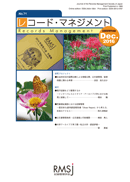Volume 67
Displaying 1-27 of 27 articles from this issue
- |<
- <
- 1
- >
- >|
-
Article type: Cover
2014Volume 67 Pages Cover1-
Published: December 20, 2014
Released on J-STAGE: March 24, 2017
Download PDF (14804K) -
Article type: Index
2014Volume 67 Pages Toc1-
Published: December 20, 2014
Released on J-STAGE: March 24, 2017
Download PDF (46K) -
Article type: Index
2014Volume 67 Pages Toc2-
Published: December 20, 2014
Released on J-STAGE: March 24, 2017
Download PDF (53K) -
Article type: Article
2014Volume 67 Pages 3-12
Published: December 20, 2014
Released on J-STAGE: March 24, 2017
Download PDF (72050K) -
Article type: Article
2014Volume 67 Pages 13-14
Published: December 20, 2014
Released on J-STAGE: March 24, 2017
Download PDF (223K) -
Article type: Article
2014Volume 67 Pages 15-17
Published: December 20, 2014
Released on J-STAGE: March 24, 2017
Download PDF (333K) -
Article type: Article
2014Volume 67 Pages 18-25
Published: December 20, 2014
Released on J-STAGE: March 24, 2017
Download PDF (1005K) -
Article type: Article
2014Volume 67 Pages 26-30
Published: December 20, 2014
Released on J-STAGE: March 24, 2017
Download PDF (539K) -
Article type: Article
2014Volume 67 Pages 31-49
Published: December 20, 2014
Released on J-STAGE: March 24, 2017
Download PDF (2188K) -
Article type: Article
2014Volume 67 Pages 50-70
Published: December 20, 2014
Released on J-STAGE: March 24, 2017
Download PDF (3076K) -
Article type: Article
2014Volume 67 Pages 71-90
Published: December 20, 2014
Released on J-STAGE: March 24, 2017
Download PDF (2436K) -
Article type: Article
2014Volume 67 Pages 91-103
Published: December 20, 2014
Released on J-STAGE: March 24, 2017
Download PDF (1573K) -
Article type: Article
2014Volume 67 Pages 104-115
Published: December 20, 2014
Released on J-STAGE: March 24, 2017
Download PDF (1473K) -
Article type: Article
2014Volume 67 Pages 116-138
Published: December 20, 2014
Released on J-STAGE: March 24, 2017
Download PDF (2548K) -
Article type: Article
2014Volume 67 Pages 139-146
Published: December 20, 2014
Released on J-STAGE: March 24, 2017
Download PDF (4084K) -
Article type: Article
2014Volume 67 Pages 147-152
Published: December 20, 2014
Released on J-STAGE: March 24, 2017
Download PDF (12352K) -
Article type: Article
2014Volume 67 Pages 153-155
Published: December 20, 2014
Released on J-STAGE: March 24, 2017
Download PDF (336K) -
Article type: Appendix
2014Volume 67 Pages 156-
Published: December 20, 2014
Released on J-STAGE: March 24, 2017
Download PDF (86K) -
Article type: Appendix
2014Volume 67 Pages 157-158
Published: December 20, 2014
Released on J-STAGE: March 24, 2017
Download PDF (67K) -
Article type: Appendix
2014Volume 67 Pages 159-
Published: December 20, 2014
Released on J-STAGE: March 24, 2017
Download PDF (52K) -
Article type: Appendix
2014Volume 67 Pages 160-
Published: December 20, 2014
Released on J-STAGE: March 24, 2017
Download PDF (64K) -
Article type: Appendix
2014Volume 67 Pages 161-
Published: December 20, 2014
Released on J-STAGE: March 24, 2017
Download PDF (57K) -
Article type: Appendix
2014Volume 67 Pages 161-
Published: December 20, 2014
Released on J-STAGE: March 24, 2017
Download PDF (57K) -
Article type: Appendix
2014Volume 67 Pages 162-
Published: December 20, 2014
Released on J-STAGE: March 24, 2017
Download PDF (74K) -
Article type: Appendix
2014Volume 67 Pages 162-
Published: December 20, 2014
Released on J-STAGE: March 24, 2017
Download PDF (74K) -
Article type: Appendix
2014Volume 67 Pages 162-
Published: December 20, 2014
Released on J-STAGE: March 24, 2017
Download PDF (74K) -
Article type: Appendix
2014Volume 67 Pages App1-
Published: December 20, 2014
Released on J-STAGE: March 24, 2017
Download PDF (22K)
- |<
- <
- 1
- >
- >|
